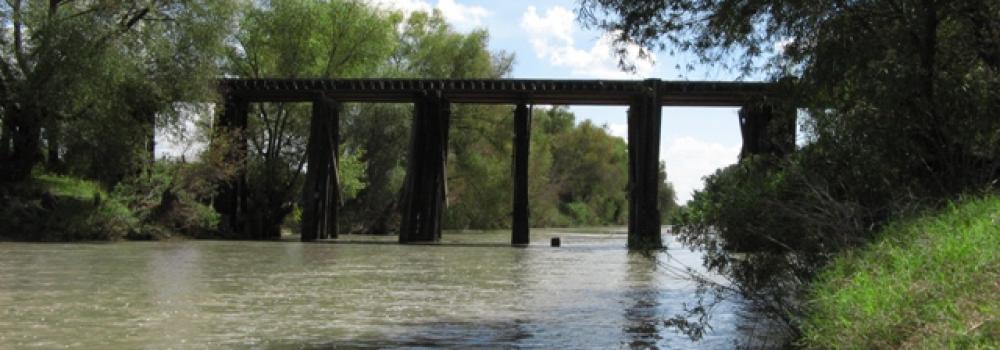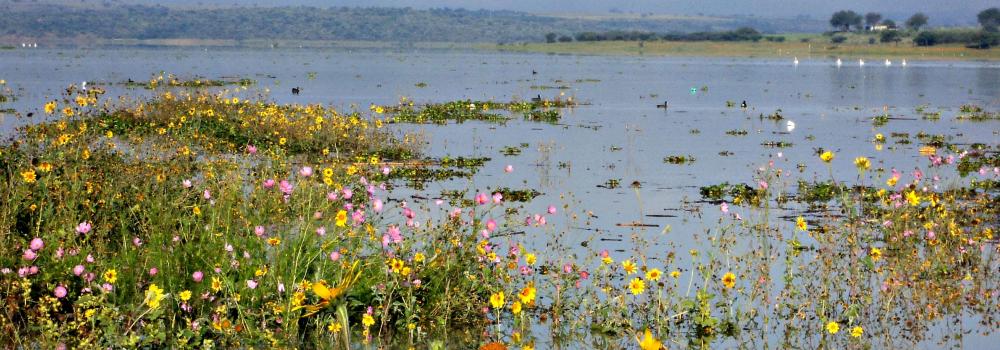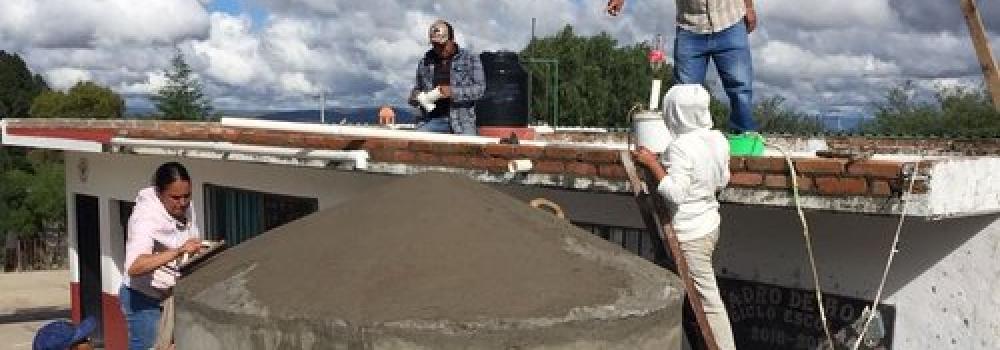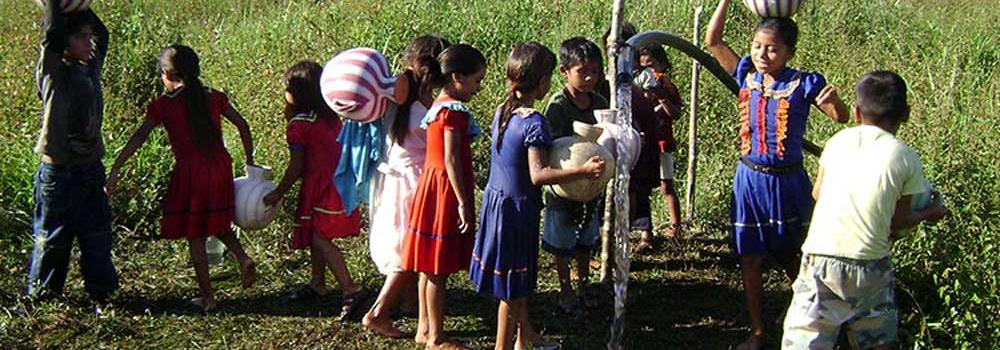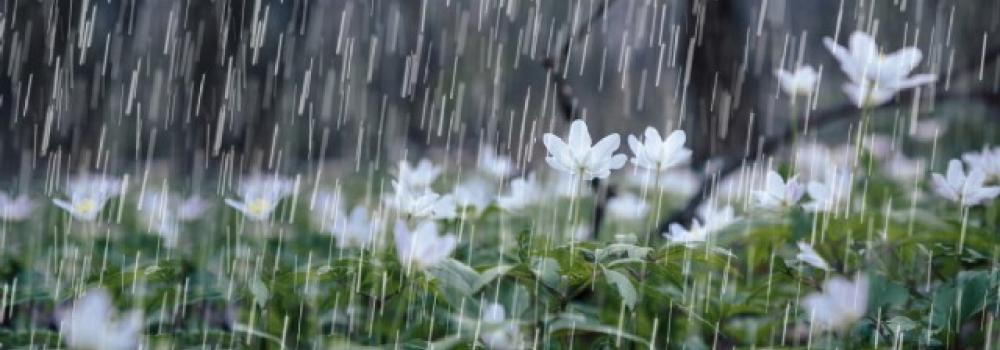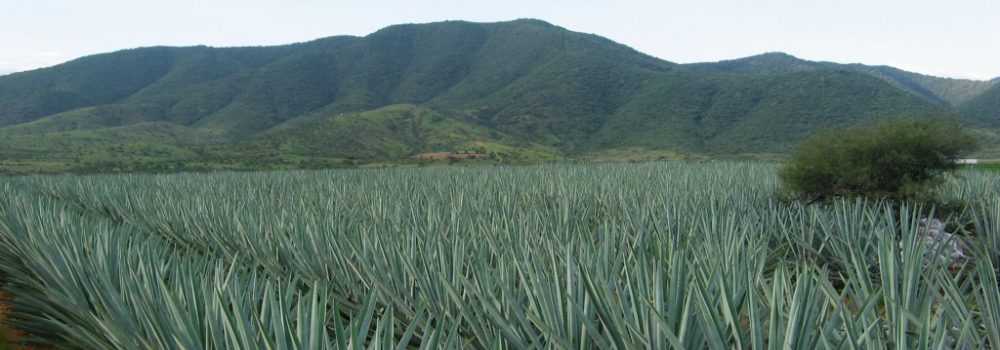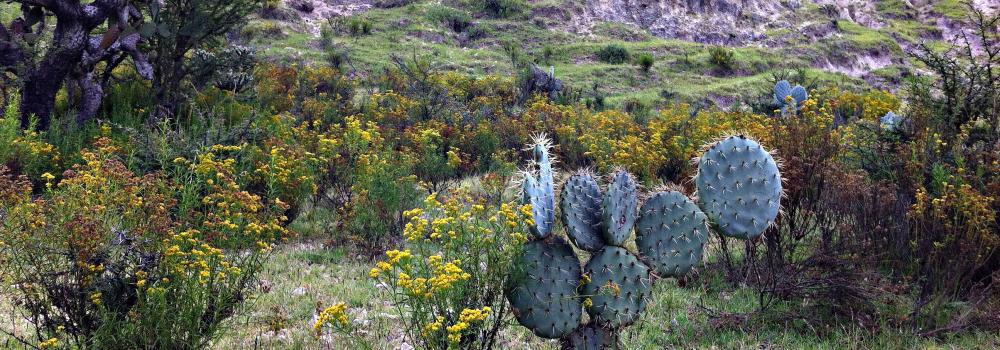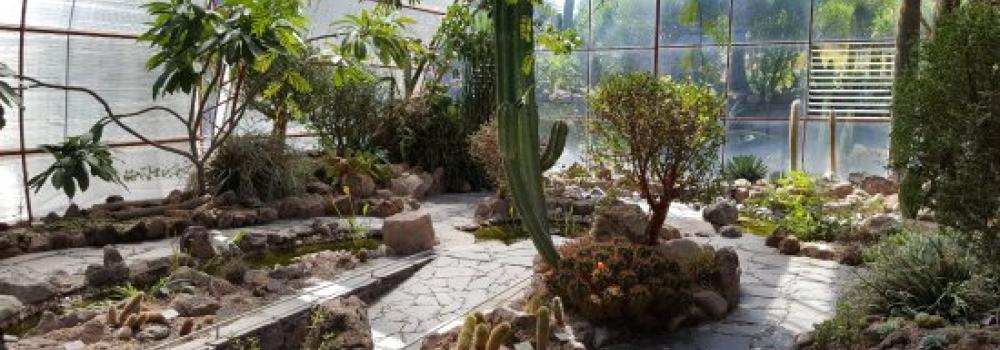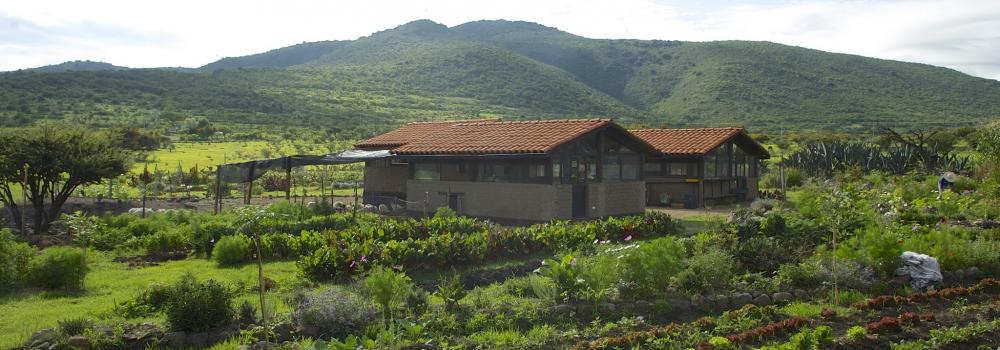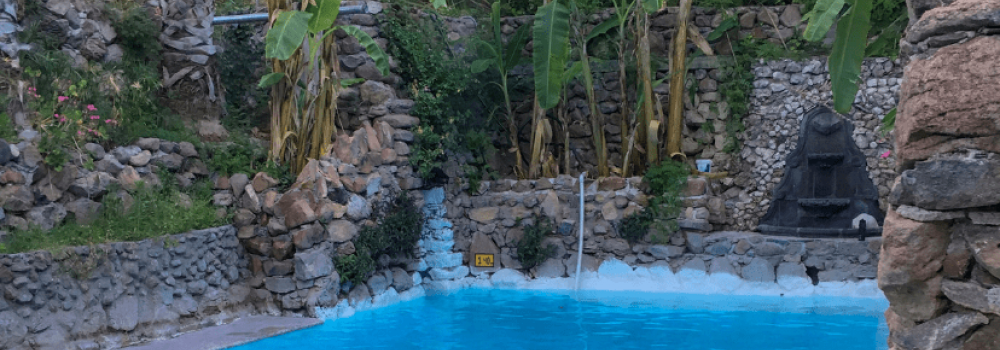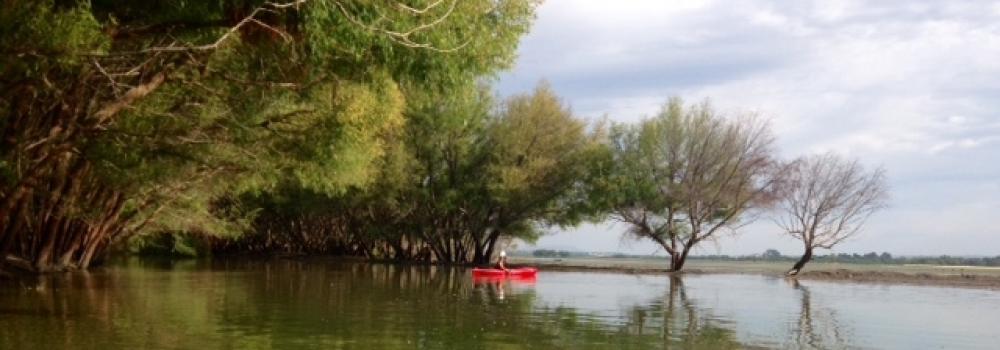Waste management, water quality and health is the topic to be addressed by our panel today in the fourth of the Water Dialogue series.
With us are Jorge Montes Garza, head of the Social Communication and Water Culture Department of SAPASMA and Denia Guadalupe González Barrios, Director of the Water Quality Office of SAPASMA, with a wide experience in the food industry, both representing the President of the Board of SAPASMA, José Ulises Valenzuela. Since l992, (SAPASMA) the Potable Water and Sewage System of San Miguel de Allende, is a decentralized public entity in charge of the operation, use and exploitation of surface and underground water, from extraction to distribution, treatment and disposal. Its vision is to “ensure water services with quality and efficiency to preserve the health and welfare of all consumers.”
Also with us is the engineer José Abraham Soto, Director of the Social Participation Promotion Department of the State Water Commission of Guanajuato, an expert on water planning and water supply, currently coordinating the COTAS associations the state. He is a Civil Engineer from the Universidad Autonoma de Coahuila and has a Master’s degree in Hydraulic Engineering from the National Autonomous University of Mexico. He´s been project assistant at the Mexican Institute of Water Technology. Since 2001 he works with the State Water Commission of Guanajuato (CEAG).
Also joining us is the engineer Rafael Zarate, Master of Science from the Polytechnic University of Madrid and president of the Board of the Centre for Innovation in Water Technology of Guanajuato. He is a founding partner of the firm “Hidrorenovación of Mexico” and expert on water reuse procedures, a wastewater consultant for the governments of Queretaro and Guanajuato, and a member of the Steering Committee of the International Council of Nanotechnology. He has participated widely in designing treatment plants in Mexico and Spain and has two patents for the water industry in Mexico .
On this occasion our moderator will be Enrique Orvañanos Acosta, dedicated to the creation and development of businesses in the private sector of Mexico. In 2010 he was elected president of the Midday Rotary Club, implementing various social projects such as the collection of rainwater in the poorest communities of the municipality.
In 2011 he participated in the renewal of the Business Council of San Miguel and is part of the Chamber of Commerce, Services and Tourism of San Miguel de Allende. His interest focuses on improving existing resources, creating new products, services, formulas, methods, processes and business models.
Enrique Orvañanos: We have gathered here members of the private sector and authorities making possible the communication we need to find solutions to the water problem. The idea is to find alternatives that are logical, feasible, and that can be carried out, some faster than others.
Rafael Zárate: I worked in the design of the water treatment plant in San Miguel de Allende. I am convinced that we have to promote sustainability in a very responsible manner. We should bear in mind that the amount of water we have now in the planet is the same as since the world was created. We look at it as something very common because we have it daily, so we don´t pay much attention to it. The problem about water is basically social and economic.
From the technical point of view, water is 100 percent reusable, so we are talking about a non-perishable resource. But we should not trust that word. We have the technology to reuse wastewater but this has been done completely only on the space stations. It´s the only place where it´s reused with all the safeguards. But the cost is extremely expensive: 90 to 100 Mexican pesos per liter. In our homes we pay 1 cent. We are talking about a cost 10 thousand times more to reuse water and we are not willing to pay that much.
If the water management system says that they are going to increase the cost 10 thousand times [ ] we would go crazy. THAT IS THE SIZE OF THE PROBLEM.
And this is the problem we´ll have in the future, 10 thousand times larger than what we have now.
The inexpensive water we are used to is a scarce resource and it´s non-renewable under those conditions. In general, water is renewable, but not under the conditions we use it.
When I was young we didn´t think of going to a store and buying water in a bottle.
But that happens now because we have degraded the resource. The Europeans that have studied water for many years and who share many of the water resources (the Danubio River goes through 7 countries, some drink from it, others discharge into it) say that the Third World War is going to be over water.
Regionally speaking, we are right now going into a conflict between Guanajuato and Jalisco. We also have a fight over water in the Cuchillo Dam between Nuevo León and the USA, with the military involved.
Now, who is contaminating our water? It is we ourselves. So, if we decide to participate in creating the problem, we must be willing to participate in the solutions. San Miguel de Allende has a wastewater treatment plant the year 2000, (actually began functioning in 2008). But it´s way too small right now. The population has grown and driving to San Miguel I just saw the incredible amount of residential developments. They are all competing for water.
The bottled water companies are selling what we are supposed to have at home.
Mexico is the number one consumer of bottled water in the world and this is something we should think about. In order to have this water quality in our homes we wouldn´t be paying a large amount of money. A liter of bottled water costs 10pesos. The cost for drinking water is 10,000 pesos per cubic meter, but SAPASMA is only charging us 13 pesos.
So we need much awareness and a sustainable use of our water resources. The water we are contaminating now we are taking away from future generations. And this contamination will continue to grow and our facilities for supply and cleaning the dirty water will have to grow at the same rate. We can´t hope that with the same amount of wells we´ll get the supply of water we need since each time it´s harder to pump it out, with the wells being so deep and with natural contaminants.
We have demographic growth. What happens if the water rate doesn´t grow at the same time while we also have an increase in contamination? We are talking about a problem we can´t ignore, pretending the authorities are going to solve it. We can´t say that if the water has arsenic and fluoride it´s o.k. because we have the money to buy bottled water. That´s not the solution. When we say yes to bottled water we are making the problem worse.
We certainly could have adequate reuse in our homes. When you bathe and wait for the hot water to come out, you are wasting 26 liters, at 10 pesos each. That’s 260 pesos. So the responsibility is ours also.
I will finish saying that SAPASMA has to pay extraction dues to the Water Commission. The water belongs to the nation. We only manage it. We have water tanks everywhere and it´s very bad because we are taking for granted that the water system is not going to work so we have to invest in a water tank to store water. The management systems pretend that they provide water and the user pretends they receive water. That´s how things are right now.
Enrique Orvañanos: When you go to the countryside, the situation is worse. They have to pay high prices for the water they use. There is an evident lack of equity in the distribution of water and at the same time the reduction of the aquifer in our region is critical.
José Abraham Soto: On behalf of the State Water Commission I would like to refer to the history, the origins of this situation. I don´t want to call it a water problem because it is a system with many facets. I remember when there was a lot of water in Guanajuato.
We had [ ]important social and economic growth especially in agriculture. The demographic growth didn´t represent a water crisis.
If we look at it as a pot, at a national level, the availability of water per capita would be around 4 thousand cubic meters per person per year. Of course, the distribution varies, however, it´s an average we are talking about.
In Guanajuato the availability of water per capita is about 775 cubic meters per year. We are talking about a water stress situation because of the very low availability.
We also have to take into account climate change in this unbalanced water system, which is a network made up of different needs. We know that in our state we have a higher demand for water supply, especially when we have the overexploitation of the aquifers. We are extracting 25 percent more than what is being infiltrated into the aquifers. This is the information from the last census. This means the water level reduction averages 1 to 3 meters per year and that has severe consequences in many areas, which is why I like to call it a system.
Therefore, if you pump deeper for the extraction of that water the quality is going to change. And this has another impact. We not only need a chlorinating system but a more sophisticated purification system in order to remove the contamination of our waters. This means we´ll have to pay more for our water…so it´s a series of causes and effects…
We are also aware of the local competition of our waters. San Miguel is part of the Lerma-Chapala Basin, along with five more states, for agricultural use. This has affected the rivers which are now little creeks of water and usually wastewater. That implies a larger cost for the extraction of waters in our management systems.
This is what we are facing now. We also have to be aware of what´s going on in the top of the mountains where the recharge is taking place.
We are not a ruling or operating agency. We are a link, the promoters or middle man with no power to be an authority. The only thing we can do to support our users and the water management systems of the different localities is through water quality programs. We can promote the use of water treatment plants and the use of dechlorinating?? agents (probably chlorinating agents because under 2500 population they are not required to treat the sewage and will need to at least use chlorine to treat the contaminated drinking water) in some rural communities that are totally abandoned, including those that we call middle level communities with 2500 inhabitants. They don´t receive economic incentives from the government.
When we refer to all the clearing and cleaning up, we are only talking about the central areas of the municipalities. We are forgetting the small communities without infrastructure for cleaning their wastewater. That´s why our image is not that great…one of our responsibilities is to provide this service to these abandoned rural communities, but we don´t have the funds or the means to do it.
In general, the rural communities operate and manage their water system and part of the sewage system. But we have identified a lack of sense of ownership on behalf of the dwellers regarding their infrastructure. We provide them with the dechlorinator?? equipment and when we come back a year later, it´s gone. That´s a problem. We are talking about an investment that disappears.
One of our priorities is to contact the water users. We need to develop a sense of ownership and responsibility in the community so they become the operators. We are promoting this water culture not only in the users but also in the operating agencies. There are users that are totally aware of the situation but maybe the managers are totally ignorant of their responsibility. So we have to face both situations.
We also do a lot of surveys: we have weather stations, water meters and many other devices everywhere that collect data. We also do water quality analysis for surface and underground water. So where are we going from here? We must look into the future in a different way.
We need more participation because we have a problem that is not going to be solved by installing pipes everywhere and more infrastructure. We need to raise awareness on water culture, develop a sense of ownership because otherwise we would be promoting the same process we have been doing so far.
We need different systems, we need to get in touch with the final users and find solutions together and get in touch with the water management systems and give them recommendations because of all the information we gather. We can consolidate the agencies supporting them with our experience .I know the cost of electricity is a problem. The agencies have to pay 20 to 30 percent of the total cost, the maintenance, the staff, etcetera. We have just received an order from the state governor saying that we must get in touch with the users to raise awareness and provide information. Of course, this implies raising the quality of the water they receive, which implies more additional effects like reducing diseases.
Water is a complicated topic but it´s a beautiful one. We have to look at it as a system and tackle every aspect of that system, which is very dynamic. Our work can´t be static or rigid. If we really want to promote sustainable actions, a positive impact on our water resources, we need to include all the factors: social, economic, environmental, otherwise we can´t speak of sustainability. We need new designs in our technology and new ways of energy supply. Also, we need the participation of all the stakeholders, society, government and all users.
Denia González: This is quite a topic and once we understand better the relation between water quality and health, we´ll know what to do in a better way. One of our main targets is to minimize diseases related to wastewater. And there is a lot of waste in our water.
There are different types of qualities in a given water. I come from the food industry and there the required quality was the cleanest water that could be. We had high controls to get the best water. Then I worked in the Water Department and I realized that there are different ways to look at it. On one side, we have the water to be used in the production of foods which needs a greater quality to guarantee our health. On the other hand, as we use that water we are getting it dirty, but it´s still a very noble water. It´s contaminated but the things that contaminate it can be eliminated easily. However, there are other contaminants in the industry that play a different role. In the manufacturing of any product like bottles, for example, and agriculture, we are talking about different contaminants. Those are the strongest ones. Water and health go together and the water availability with high quality is an indispensable condition for life.
We also get contaminated water from the rain. When it falls in our streets it carries other types of solids and hydrocarbon from cars, dirt, etc. Also, the water used for certain crafts carries detergents that are not biodegradable.
Those locations that do not have enough water do not grow. We need a certain amount of water to produce certain things and Jorge will mention a few.
Sometimes we go to crazy when we know how much water is needed to manufacture a given product.
Jorge Montes: We had a very interesting campaign where we informed the public about the amounts of water needed in the manufacture of certain products.
For example, 1 liter of beer uses 5 to 25 liters of water; 1 kilogram of cement uses 25 liters of water; 1 kilo of steel, 300 to 600 liters; 1 liter of milk, 2 to 5 liters of water.
Within domestic use, we need 20 to 50 liters of water to shower; 20 liters to wash your dishes; for your laundry, 50 to 120 liters of water; to water one square meter of a garden, 70 liters; to wash your car, 90 liters of water.
In agriculture, to produce 1 kilo of fodder, we need 1100 liters of water; for 1 kilo of wheat, we need 1500 liters of water; 1 kilo of rice, 4500 liters; 1 kilo of cotton, 10,000 liters of water. In many cases we are talking about the water we use from the time the seed is planted …
Denia González: The Department of Water Quality of SAPASMA has been monitoring the contaminants we receive in the municipal sewage system. We monitor 4 thousand sample points where we analyze what´s being dumped into the sewage system.
We also go to the communities and analyze their levels of contamination. We know that every time we go deeper into the wells we find more contaminants. We also use chlorinated pills to reduce contamination in drains. And we monitor the wastewater treatment plant that cleans the water from San Miguel. Many of us dump into the drain things that we shouldn´t. For instance: paint, muriatic acid to clean the toilet, caustic soda to clean the ovens, used cooking oil. That´s an area we should all address. Before I wash all my dishes I clean them with my napkin and I put all the oil together in a special bottle into the trash.
Jorge Montes: Currently we are working with a group of young people known as Kids in action…they have different centers to receive used kitchen oil to turn it into biodiesel. So instead of dumping it into the drain you can store it in a glass bottle and when you pay your water bill you take that container to the SAPASMA office where there is a container to place the bottle.
Enrique Orvañanos: We are thankful for the rain water falling at this moment and if we would recover it it would allow us to fill out the Presa Allende. However, when it goes into the creeks it carries all the trash and there is no wastewater treatment plant that is capable of cleaning that type of water. We need to have a different catchment system for rain water in order to minimize the load that goes to the treatment plant.
Jorge Montes: After all that has been said I have some additional information. What do we do at SAPASMA? Well, with regards to social communication and water quality, we try to get in touch with all the schools, elementary, junior high, universities and we give talks and develop different types of workshops and games. We take the children to the water treatment plant so they learn about the importance of not dumping waste into the toilets…We also work with the communities.
Recently we had a campaign that said: “If you use more water, you pay more money”. We want to raise the water awareness or “water culture”. We send messages through the radio, TV and print media. In the newspaper Atención we have included messages for the foreign community. We also have a web page: www.sapasma.org.mx where you can pay the bill online. You can find a social network participation with water culture messages.
For as long I have been working in this department, I have developed projects that are dedicated to water care and sustainability like the Used Kitchen Oil Recollection Program and the plastic and battery recollection program, one of the most important contaminants in the water sources.
On March 22, the World Water Day we have massive events, workshops, contests, musical presentations, photographic exhibitions with the sole purpose of raising awareness.
The doors of SAPASMA are fully open and we are at your service for whatever you need.
Question from the audience: Most places in the world and I suppose in San Miguel de Allende 15 percent of the water resource is used for domestic consumption and the rest is for agricultural and industrial us e. What has been done to educate those sectors that use so much water? I understand there is a federal law that says that all wells should be metered but this is not being done. What has been done to fix this?
Jorge Montes: The current Board of Directors is promoting a better relationship with those users that pay regularly. We need the funding to increase our infrastructure. We need better tools for water management. We have users that promptly pay their bills but others are way behind. We don´t have the necessary financial infrastructure to work as we should. So the current Board has decided to be very inflexible with those who don´t pay and at the same time is raising awareness. One thing is to care for the water you use and another is to pay the bill promptly in order to get the water you need because the agency can cut the supply. With the correct monitoring equipment we can also detect the illegal pumping that is not being registered right now. Those are concrete actions.
Question from the audience: So what do we do?
It is a global problem as well as regional. I propose that we roll up our sleeves and get to work. We have accepted your invitation to actively participate as citizens and so the organization sponsoring these Water Dialogues, ordinary people, is also undertaking other parallel actions.
We invite all of you to join us and participate in our water quality sampling program in the Laja River. We are also concerned about the Cachinches stream and we have already started a series of studies to determine the quality of its water.
We also have a program that consists of visiting door to door every neighborhood and colonia of San Miguel, hopefully with the support of SAPASMA, in order to make a small survey asking the families how much they know about the situation of the water in San Miguel. We´ll also give them a list of things they can do in their homes to conserve water, as well as a document with the facts about the real situation of the water in San Miguel .
Likewise, we also plan to visit restaurants and hotels. Why do this if only 15 or 20 percent of the water is consumed in our homes? To create awareness. This is the only way to inform the public about the stress afflicting our resource. We can help the authorities to ensure that all users, especially those consuming 80 percent of the water, are not wasting it. If 50 of that 80 percent of agricultural water is wasted we must do something about it. How? Roll up your sleeves and get to work. We need at least 75 volunteers to help us go door to door to make this type of survey and monitoring. Visit our website www.aguavidasma.org and participate as volunteers.
Enrique Orvañanos: Yes, we have to put ourselves to work. Government officials, technicians, operating systems, society, if we don´t do something right away, we´ll pay a very high price for our omission.
Question from the audience: I believe that the problem is as easy to solve as it is complicated to solve. If you spend, you pay, if you consume more, you pay more. And the rule of supply and demand says that when there is a lot of something, you pay very little for it. If there is shortage, you pay a lot. So we need an authority that forces the citizens to use what he or she needs and no more…but the problem is we always want more and more of what we have.
If we don´t see the water issue as a political problem, we are not going to find the solution. A political approach goes hand in hand with an education program: “I´m going to teach you to solve this problem. I´m going to be the example because you educate by setting the example”. We are what we do, not what we say we will do.
But if I set the example and you don´t learn, then I enforce the law. That means I´m going to educate you in a six month period. But if you don´t learn that way, then I´ll charge you the real cost of water when it implies cleaning it from all the trash, which includes the real cost of energy consumption. That is the only way. Then we would have real solutions to real issues.
What is going on here is that five years go by, ten, twenty years go by… and nothing happens. I think that the solution is in small cities like San Miguel. This city has a solution. Large cities are hopeless. I think in San Miguel the municipal authorities are not concerned with solving the water issue. I have approached the municipal city hall to provide them with choices and they have not been open. The previous administration and the current one are the same. I would like to hear the opinion of the panel members on the political aspect of this issue.
Denia González: A very personal comment. I believe that we must begin in our homes with our children. We as officials are a minority and if we don´t have the support and awareness of the population, very little can be done. Politics cannot help.
Enrique Orvañanos: I also agree. We are mature when we are aware. I don´t think it´s adequate to have the authority behave like a father educating us. The force and knowledge comes from Dialogues like these, plus organization, participation and cooperation. That´s how the authority reacts. We can´t ask our daddy, as we have done it for so many years, to do everything for us. Let´s do it ourselves and have the participation of the public management system working along with us.
Question from the audience: There is no doubt that everyone here wants to do something for San Miguel. However, it seems we don´t agree on how to do it. And how to coordinate it. I think we are still missing an adequate gathering with discussions that contribute with ideas on how to solve the problem. It’s a small city but we have a lot of people sincerely concerned about saving San Miguel, saving the Laja River, the Allende Dam. We blame it on the farmers…but what are we going to eat? Why is the agriculture so impoverished? We need to go to the root cause.
The solutions to the problems of humanity are very close to its root which is the family nucleus itself. Children learn from their parents. What we need is more education. The farmers need to do a lot of things to produce a tomato that only costs 1 peso. We don´t see that part of the problem. So my very humble suggestion is that we need to have more people, have more opinions to provide solutions. And stop complaining.
What can we do? I don´t want to brag about this but I came to this town to build an eco village, self sufficient and sustainable. I did it with my own resources so that people could see that we can recycle water, not only to irrigate golf courses, but to regenerate the soil as well. That´s what´s important. Water treatment can become a great fertilizer. And it´s not another business for people that do not have a vocation, don´t care about society or taking care of life. Those water treatment plants are like an infection of contamination. And the water they treat cannot be used in a milpa, only in a golf course.
I want to help. We can do a small gathering because my Eco Village is a very small one but anyone who wants to come and see, is welcome. I can teach you and share with you all the information I have. And if I´m wrong, I would like to hear your opinion.
Question from the audience: We know that not all the wastewater in San Miguel goes to the water treatment plant even though it could treat 100 percent of the water with organic waste. It´s very good that you are trying to control the chemicals, the oils, however, we’ll never be able to get rid of them all. There´s always going to be rain, street drainage and chemicals. So, don´t we need another type of treatment? Should the plant be different?
Denia González: Of course, there are other types of pre-treatments. But I don´t think that our agency could afford to clean industrial waters. This plant is a biological plant. It has microorganisms and even though they are microscopic, they behave just like we do. They eat, they need oxygen. When we dump chemicals the organic matter in the water is eaten by the microorganisms and with other contaminants, we are providing food in bad conditions. We could use pre-treatment that are very expensive. It´s one of the solutions. The other solution is not to dump into the drain what we are not supposed to. And that´s less expensive but complex to do. Those are the two options that we have.
Question from the audience: What does Sapasma think about reducing the water supply to the home users.
Jorge Montes: Right now Sapasma provides the service without a limit. The commercial area of Sapasma is currently studying different types of projects. This week they began with a program to replace the micro meter in each one of the homes, beginning downtown. We know that the best way to control the amount of water is by using a meter. We are improving this technology. We are also dividing San Miguel in sectors so we have macrometers in the neighborhoods. That´s another type of monitoring. With that information we´ll know the real consumption and will help us detect leaks. In León there is a project that controls the consumption by using prepaid cards and as soon as you have used up the amount, the service is closed down. Then you need to recharge your card to receive the water supply again.
SAPASMA is already studying those possibilities.
Question from the audience: I think there is no unique solution to the problem but we certainly can put together a set of actions. Creating awareness in the use of water is the first one. But there are also new technologies available and I have made a lot of research and I know there are “new technologies” which were used in the past history. Not long ago I saw that in some countries they are working with creeks that used to be liquid trash and they are changing them into wetlands to clean the water therein. I don´t know if that would be feasible in San Miguel de Allende and applied to the Cachinches creek and many other places. We´re only talking about treatment plants but what about agriculture. I´ve studied different techniques for different types of crops. My question is why the government is not promoting these techniques? And what are we doing to catch rain water in San Miguel de Allende?
Denia González: Yes, there are wetlands, anaerobic techniques, but if you are going to treat the water with oxygenation pools yes, they are inexpensive methods where you don´t have to pay electricity bills and equipment maintenance, but here, a square meter of land is very expensive and to do a water treatment of this kind we would need hectares.
Enrique Orvañanos: I would like you to participate in our meetings because all of this information needs to be shared in our gatherings. Is rainwater being caught? Yes, a little is being done. The last administration did something about it and the current one is interested as well.
Question from the audience: Do you have a project to create awareness in the farmers about the wastewater discharges and the use of separated treatment?
Denia González: The idea is to promote irrigation with water from another source, not just wells. If farmers could use treated water, that would be wonderful. It´s quite an ambitious project but so far, the water treatment plant sells water only to the golf course.
There are other projects to use that water for green areas and construction. We presented a plan to the ejido owners near the treatment plant so they can use our water. It has one of the best quality levels in Guanajuato and produces one of the largest amounts of water considering the contaminants that it receives. We have been acknowledged by the federal government. We are receiving 60 cents per cubic meter as a federal contribution. Our water treatment plant is part of that federal support.
Another project we have is the production of compost. An aerobic plant generates a lot of sludge that could end up being a problem so we are beginning to make compost to regenerate soils.
Abraham Soto: The water quality for raising crops is a requirement. If I want to sell wastewater to a well user for vegetable irrigation, they will probably refuse it because the quality would not be adequate. But we are looking into that perspective. There are small projects here and there to stop the use of wells. In Celaya, El Rincón, in Acámbaro, they use treated water. But we´re talking about very specific crops and you need to meet a certain quality.
Conclusions:
Rafael Zárate: I know the work of SAPASMA is excellent and it´s already written down in a legal framework. But they can´t do more than what the law establishes. Mexico´s standard for arsenic in potable water is 25 ppm. And the World Health Organization establishes that above 10ppm is dangerous. So dangerous that the risk of diabetes 2 is increased by 385 percent.
The health problem today is diabetics. And it´s going to cost the government much more money than if it had invested in reducing the standard and providing the treatments to meet the new standard. So even if we had a great administration with great solutions, they couldn´t solve the problem. Diabetes in this country has killed more people than organized crime. And the government is not going to do anything about it because the standards we have in our country do not protect the citizens.
As a society we need to organize ourselves because we are paying for the consequences. And I hope that the invitation has actually a good impact.
Abraham Soto: We need to foster a change of paradigm. We have to begin with small projects that are going to be contagious. That’s the only way of doing it right. I hope that everyone here could actually express our awareness of the water scarcity so we can go to our neighbors and raise more awareness.
Denia González: This is not the end. We must commit to raising awareness. If we are 50 people here today and we go out and spread the word, we could turn it into 100 voices.
Jorge Montes: I agree. We need to generate multipliers of water care. It´s the only way to reach the decision makers. I share the ideology of SAPASMA and we are open to listen to your proposals. We are here to serve the people.
Enrique Orvañanos: The problem is ours, so the solution is ours. I summarize all that has been said here in one word: participation.

